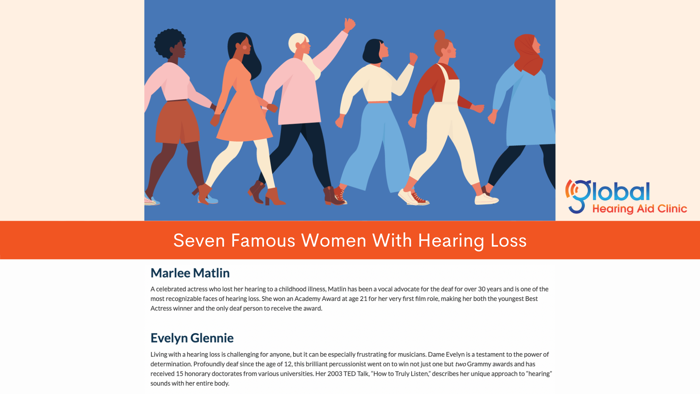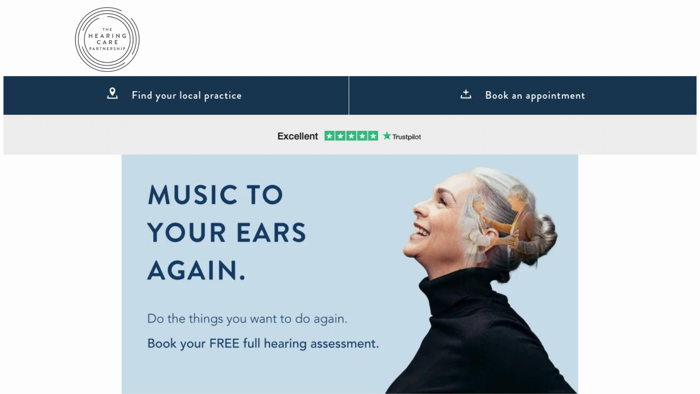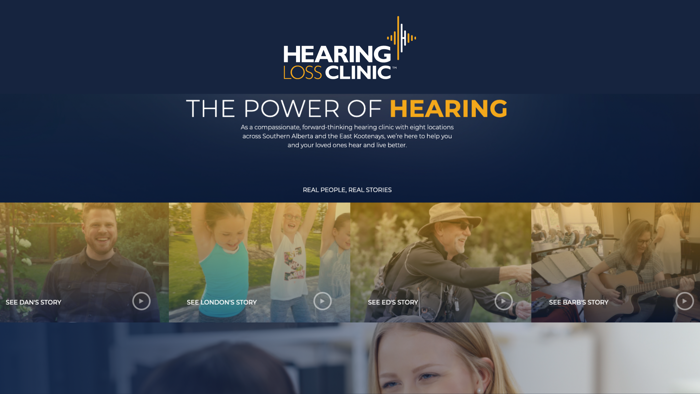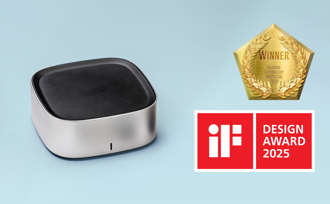
Hearing loss is an invisible disease and has, for many years, been associated with being old, inattentive, or even stupid. Moreover, the consequences of a hearing loss have not been well communicated to the greater public. Therefore, people aware of their hearing loss have no burning platform to act.
Hearing loss is one of the most common chronic conditions experienced by older adults, with its prevalence reaching 33% of people over 65, and almost 50% in those older than 75. It is estimated that only 17% of those who would benefit from using a hearing aid actually use one.
The lack of accurate information and stigmatizing mindsets surrounding ear diseases and hearing loss often limit access to care. Even among healthcare providers, knowledge relevant to prevention, early identification, and management may be lacking, thereby restricting the care they provide to those with ear and hearing needs. Additionally, there is a big stigma related to hearing loss, and many misconceptions of what a hearing aid does, costs, or looks, and sounds like.
What Communication Looks Like Today
Large suppliers (with exceptions of course) do not help correct these misconceptions as they, too, communicate to address these stigmas and misconceptions by addressing the stereotyped pain points. Moreover, most hearing aid manufacturers market themselves to clinic owners and audiologists and not to the end-users. This means that the messaging is often very technical and nerdy.
Examples of business to consumer communications are “this means that the metallic sound many users of hearing aids relate to hearing aids is something from the past” or “you can get a more natural sound picture.” or “you can get an M&RIE (Microphone & Receiver-In-Ear), which gives you a complete, natural and more fulfilling hearing experience”.
These examples are not mentioned to point fingers at the manufacturers, but they should really consider segmenting their messages into B2B vs B2C communication.
First off, these examples can be very hard to understand if you are not an audiologist or at least an experienced hearing aid user. Secondly, these are not really selling points to end-users. Why mention metallic sounds are “more fulfilling” than before? This sounds like it is no good and still needs some work before the sounds are natural. Moreover, does this inspire consumers to do something about their hearing loss? Not really.
In WHO’s report on hearing, they even criticize manufacturers for their messages that reinforce the stigma around hearing aids. Marketing strategies aim to improve hearing aid uptake by promoting devices that are small and barely noticeable when worn.
By talking about being invisible, there is an underlying message that a visible hearing aid is a bad thing, and that hearing loss is something that shouldn’t be shown. Everyone in our industry should start communicating in a different way.

What Can You, As A Clinic Owner, Do?
This type of B2C communication needs to change. And there should be full industry support of this movement to improve the help-rate of only 17%. The communication should help diminish stigma, talk about benefits of hearing aids, and explain how hearing loss has consequences.
👍Dos
- Recognize that new users need a burning platform to act on their hearing loss
- Talk about the consequences of a hearing loss
- Use case stories from users to express their experiences
- Talk about the benefits of hearing aids
- Ask questions in the marketing to help people understand the signs of a hearing loss
- Only use marketing materials made for the B2C segment
- Show what a hearing loss feels like. Using features from the audiometer, you can simulate a hearing loss to your customers and their loved ones. This way, they will better understand what it means to have a hearing loss.
- Hold events or information sessions about hearing care and hearing health. Consider using a tablet-based screener to engage with prospects.
🚫Don'ts
- Don’t talk about stigma or misconceptions
- Don’t talk about complex features to new users
- Don’t use the marketing materials from the suppliers 1-1 without a critical eye
Example 1
Global Hearing Aid Clinic Removes The Stigma Of Hearing Aids In Their Blogs
On their website, in the blog section, Global Hearing has several articles about hearing loss and how regaining hearing can improve life.

Example 2
The Hearing Care Partnership Speaks To The Heart
A simple sentence that speaks to your emotions goes a long way.

Example 3
The Hearing Loss Clinic Shows The Power Of Hearing With Customer Stories
Powerful customer stories are the first thing visitors of the site can see.

It’s essential that we change the dialogue around hearing health and inspire people to act so we can raise the very low help-rate of 17% moving forward. If we all work together and start communicating more proudly about hearing health and the benefits of today’s solutions, we can diminish the stigma widely associated with hearing loss and hearing aids, encouraging and inspiring more people to prioritize their hearing health.
Other Blogs You Might Enjoy:

7 Critical Actions to Maximize Success in Your Hearing Care Business
Owning a hearing health clinic can be extremely rewarding. This post will spotlight seven critical actions you can take to maximize success.

Improving Satisfaction Rates for Hearing Aid Users
Learn how to guide your customer hearing aid experience through the initial follow up period and beyond to ensure that customers remain satisfied.

How To Onboard Staff In Retail Hearing Clinics
To help hearing professionals and hearing clinic owners how to successfully and seamlessly onboard and train new staff.
Don't Miss Out On the Latest Insights On Audiology
Sign up today to receive exciting updates, tips, and the latest newsletters from Auditdata.





